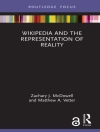Community policing, as a philosophy, supports the systematic use of partnerships and problem-solving techniques to proactively address the immediate conditions that give rise to public safety issues, including crime, social disorder, and fear of crime—as opposed to responding to crime after it occurs. Community policing expands the traditional police mandate. It broadens the focus of fighting crime to include solving community problems and forming partnerships with people in the community so average citizens can contribute to the policing process. Originating during police reform efforts of the 1970s, the philosophy of community policing is currently widespread and embraced by many citizens, police administrators, scholars, and local and federal politicians. What sorts of collaborative partnerships have evolved between policing agencies and the individuals and communities they serve? How do police departments engage in systematic examination of identified problems to develop effective responses? How have police departments aligned their organizational structures to best support community partnerships and proactive problem solving? Just how effective have efforts at community policing been? These questions and more are explored within the pages of this new reference work.
Features:
- A collection of 150 to 175 entries are organized in A-to-Z fashion in one volume available in both electronic and print formats.
- Signed entries, authored by significant figures in the field, each conclude with Cross-References and Suggestions for Further Readings to guide students to in-depth resources.
- Brief ‘What Works’ case studies within appropriate entries profile community policing programs and strategies as tried in various cities and communities.
- Although organized in A-to-Z fashion, a thematic ‘Reader′s Guide’ in the front matter groups related entries by broad topic areas (e.g., Foundations; Methods & Practices; Legislation & National Organizations; Changing Agency Culture; Planning & Implementation; Training & Curriculum; Assessment & Evaluation; etc.).
- Also included in the front matter, a Chronology provides students with historical perspective of the development of community policing.
- The entire work concludes with a Resources appendix listing classic books, journals, and associations, followed by a comprehensive Index.
Circa l’autore
Kenneth J. Peak is emeritus professor and former chair of the Department of Criminal Justice, University of Nevada, Reno, where he was named “Teacher of the Year” by the university’s Honor Society. Following four years as a municipal police officer in Kansas, he subsequently held positions as a nine-county criminal justice planner for southeast Kansas; director of a four-state technical assistance institute for the Law Enforcement Assistance Administration (based at Washburn University in Topeka); director of university police at Pittsburg State University (Kansas); acting director of public safety, University of Nevada, Reno; and assistant professor of criminal justice at Wichita State University. He has authored or coauthored 37 additional textbooks (relating to general policing, community policing, criminal justice administration, police supervision and management, and women in law enforcement), two historical books (on Kansas temperance and bootlegging), and more than 60 journal articles and invited book chapters. He is past chair of the Police Section of the Academy of Criminal Justice Sciences and past president of the Western Association of Criminal Justice. He received two gubernatorial appointments to statewide criminal justice committees while residing in Kansas and holds a doctorate from the University of Kansas.












